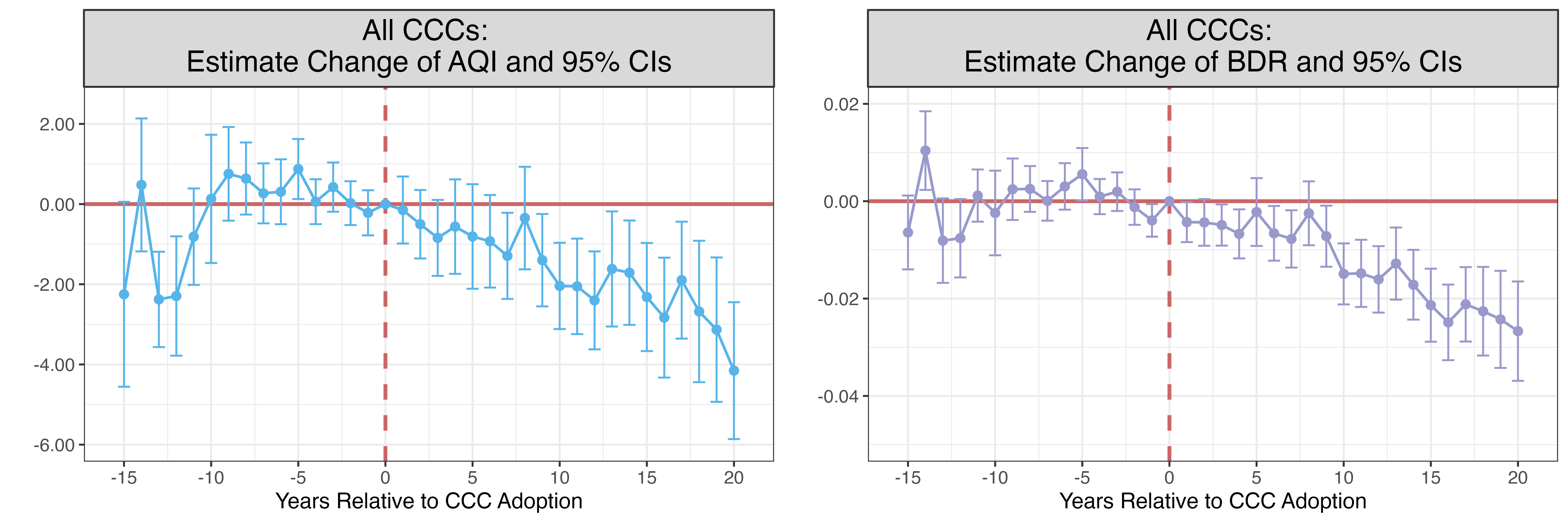Publication Page Pre-print Data & Code
Abstract
This study examines the effectiveness of collaborative platforms in supporting local collaborations for natural resource management. It also explores how governmental and non-governmental lead organizations adopt differing collaborative implementation approaches and how these variations influence outcomes. Utilizing a natural experiment and a difference-in-differences estimator, we evaluate if the Department of Energy’s Clean Cities program functions as a collaborative platform to foster local-level Clean Cities Collaborations across the U.S., thereby improving air quality. Our findings suggest that Clean Cities Collaborations have a substantial and enduring impact on reducing air pollution. A series of subgroup analyses suggests that these environmental improvements are most noticeable in collaborations led by nonprofits and regional government councils, rather than those directed by state and local governments. A complementary content analysis provides exploratory evidence that issue definition, collaborative group structure, and inclusive decision-making processes are crucial managerial factors that contribute to the environmental improvements. These insights pave the way for more effective management of collaborative governance on a larger scale.
Figure 5: Dynamic treatment effects of CCCs on air quality: Event study analysis
